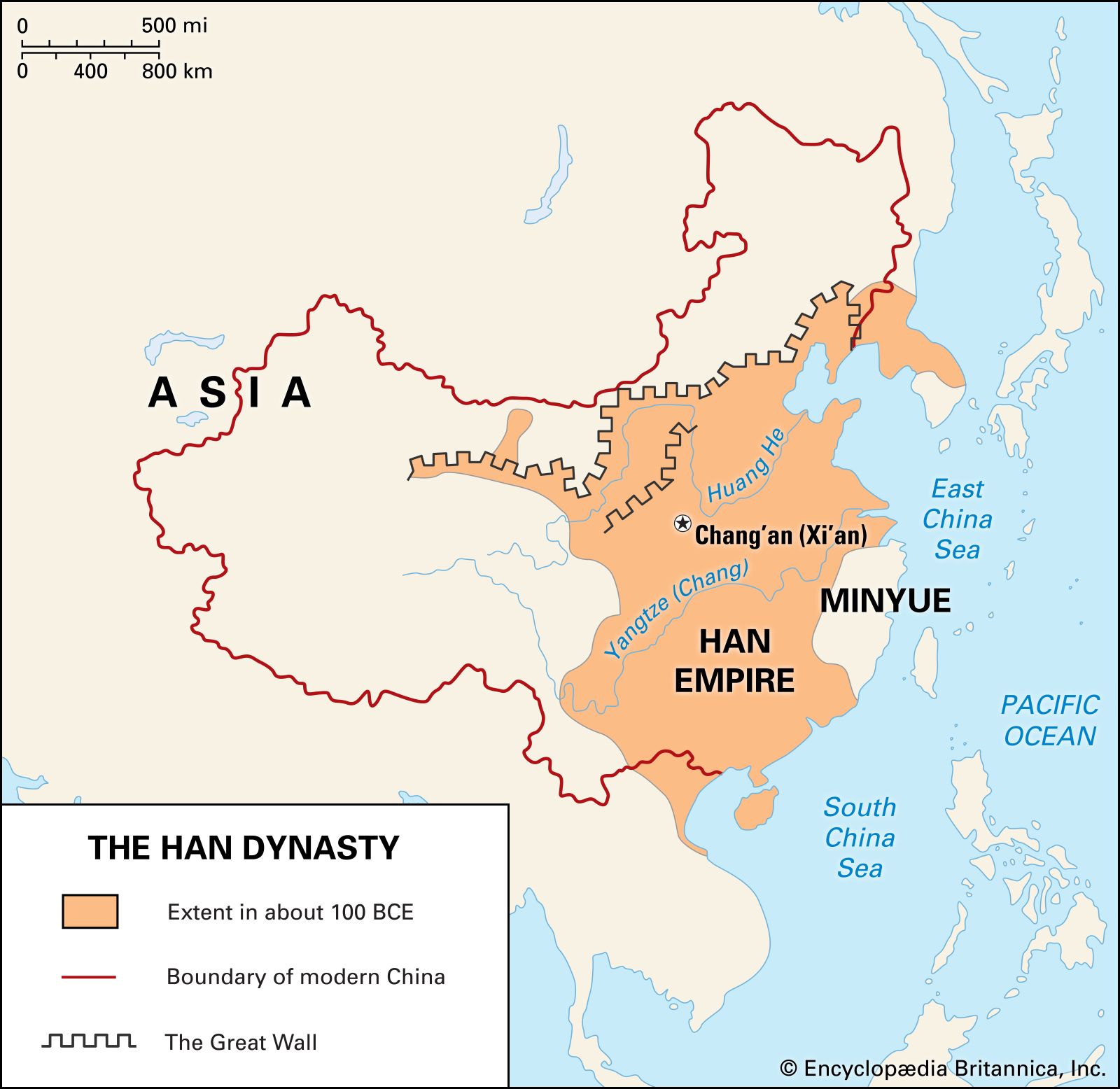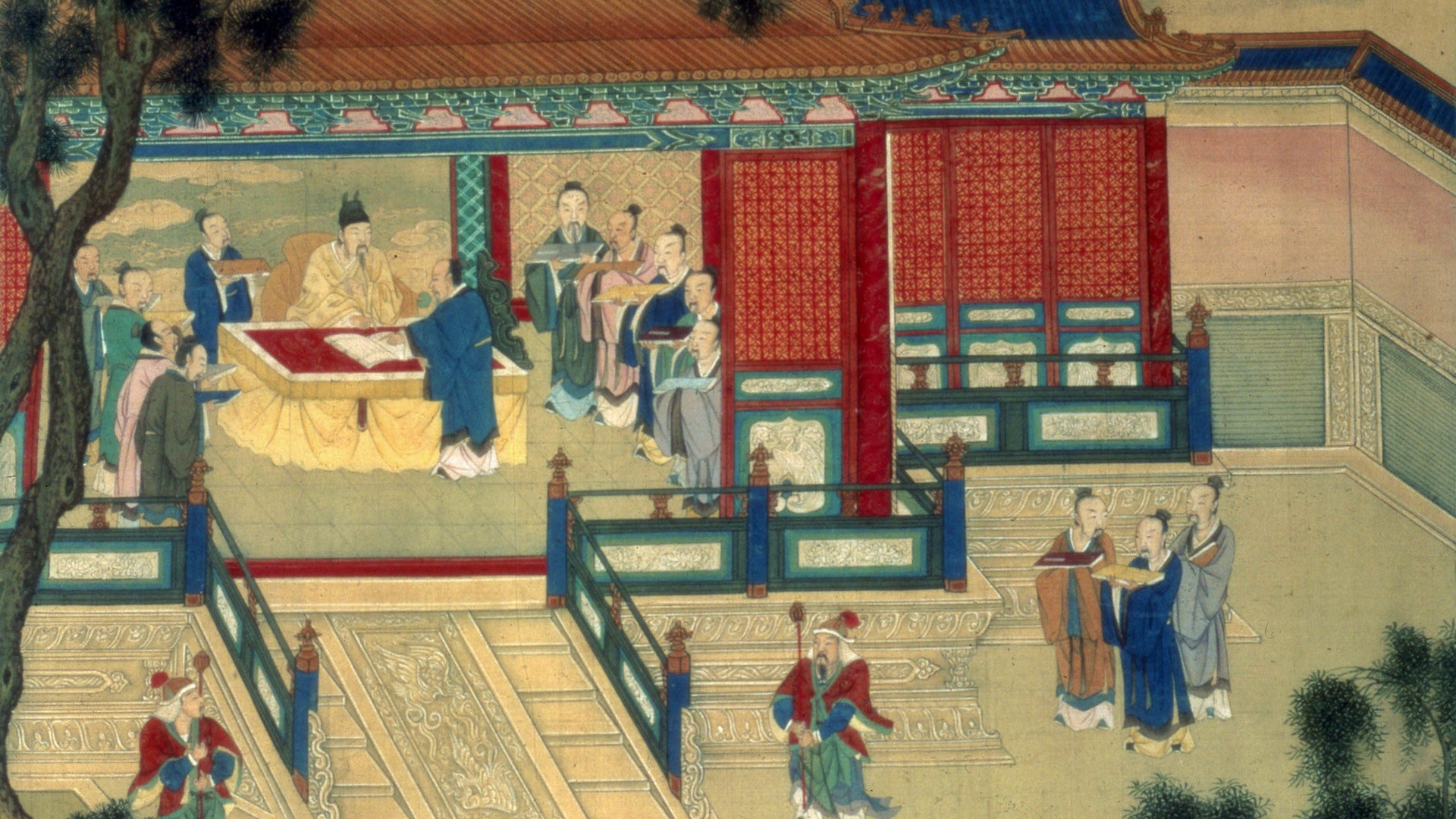The Han Dynasty’s rule in Ancient China is a fascinating period of history that spanned over four centuries. During this time, the Han Dynasty established a powerful empire that greatly influenced the cultural, political, and economic landscape of China. It is interesting to note that the Han Dynasty is often considered as the Golden Age of China, known for its advancements in technology, literature, and philosophy.
The Han Dynasty ruled ancient China from 206 BCE to 220 CE, making it one of the longest-lasting dynasties in Chinese history. This period saw the consolidation of a centralized government, the expansion of trade along the Silk Road, and the development of a civil service system based on meritocracy. Additionally, the Han Dynasty is renowned for its establishment of the Silk Road, a network of trade routes that connected China to the West, facilitating cultural exchange and economic growth.
The Han Dynasty ruled ancient China from 206 BCE to 220 CE. This imperial dynasty contributed significantly to the development of Chinese culture, economy, and government. It was a period of stability and prosperity, known for achievements in science, arts, and trade. The Han Dynasty’s rule spanned over four centuries and had a lasting impact on Chinese history and civilization.

Contents
The Rise of the Han Dynasty
The Han Dynasty is one of the most important and influential dynasties in ancient China. It ruled over the Middle Kingdom for a significant period, contributing to the country’s stability and cultural development. When did the Han Dynasty rule ancient China? Let’s delve into the timeline and key events that marked the reign of this remarkable dynasty.
The Establishment of the Western Han Dynasty
The Han Dynasty began with the establishment of the Western Han Dynasty, which lasted from 206 BCE to 9 CE. The founder of this dynasty was Liu Bang, who adopted the title Emperor Gaozu. Liu Bang emerged victorious after a prolonged period of political turmoil following the fall of the Qin Dynasty.
Emperor Gaozu implemented policies to stabilize the country, such as reducing taxes and decentralized administration. Under his rule, the Western Han Dynasty expanded its territory, establishing a centralized bureaucratic system and promoting Confucianism as the dominant ideology.
The Western Han Dynasty reached its peak during the reign of Emperor Wu (141-87 BCE). Emperor Wu expanded China’s territory significantly through military campaigns and strengthened the central government. He also promoted Silk Road trade, bringing prosperity and cultural exchange to the region.
Key Events during the Western Han Dynasty
- 206 BCE: Liu Bang establishes the Western Han Dynasty.
- 140 BCE: Emperor Wu comes to power, leading to significant territorial expansion.
- 114 BCE: Completion of the Great Wall of China.
- 87 BCE: Emperor Wu dies, marking the beginning of a decline in the Western Han Dynasty.
The Interregnum and the Eastern Han Dynasty
After the death of Emperor Wu, the Western Han Dynasty experienced a period of instability known as the Interregnum. Various factions within the government struggled for power, and the central authority weakened. This led to social unrest and rebellions across the empire.
In 25 CE, the Eastern Han Dynasty was established when Emperor Guangwu defeated the usurper Wang Mang. The Eastern Han Dynasty lasted until 220 CE. Despite the initial challenges, the Eastern Han Dynasty managed to stabilize the country and continue the legacy of its predecessor.
The Eastern Han Dynasty focused on strengthening the economy and implementing reforms to address social issues. Agriculture flourished, trade routes expanded, and papermaking was invented, contributing to the rise of Chinese civilization. However, towards the end of the dynasty, corruption and factionalism led to its decline.
Key Events during the Eastern Han Dynasty
- 25 CE: Emperor Guangwu establishes the Eastern Han Dynasty.
- 166 CE: Yellow Turban Rebellion begins, signaling the decline of the dynasty.
- 190 CE: Dong Zhuo usurps power and brings chaos to the empire.
The Legacy of the Han Dynasty
The Han Dynasty left a lasting impact on ancient China in various aspects of society, politics, and culture. It established a strong centralized government and bureaucratic system that served as the foundation for future dynasties. Confucianism became the dominant ideology, shaping moral principles and social norms.
The Han Dynasty also made significant advancements in science, technology, and the arts. The invention of paper revolutionized communication and education, while the development of sericulture and improved agricultural techniques enhanced productivity. The dynasty’s rich artistic traditions, including ceramics, poetry, and music, continue to inspire and influence Chinese culture.
Although the Han Dynasty eventually declined and gave way to subsequent dynasties, its legacy remains deeply ingrained in Chinese history. The dynasty’s achievements and innovations continue to be celebrated and studied, serving as a testament to the remarkable impact of the Han Dynasty on ancient China.

Han Dynasty Rule in Ancient China
The Han Dynasty ruled ancient China for more than 400 years, from 206 BCE to 220 CE. It is considered one of the most illustrious periods in Chinese history, characterized by political stability, economic prosperity, and cultural achievements.
The Han Dynasty was established by Liu Bang, who became Emperor Gaozu. His reign marked the end of the Qin Dynasty and the beginning of a new era in China. The Han Dynasty is divided into two periods: the Western Han (206-9 BCE) and the Eastern Han (25-220 CE).
During the rule of the Han Dynasty, China experienced major advancements in various domains. The centralized government implemented effective governance policies, including the establishment of imperial examinations for recruiting officials based on merit. The Silk Road emerged as a significant trade route, connecting China with neighboring regions and facilitating cultural exchanges.
The Han Dynasty also witnessed significant cultural achievements, notably in literature, art, and technology. Important works such as the Records of the Grand Historian by Sima Qian and the poetry of Ban Gu are examples of the literary brilliance of this era. Additionally, advancements in agriculture, papermaking, and metallurgy propelled the empire’s prosperity.
The Han Dynasty’s rule came to an end in 220 CE, following internal conflicts and the weakening of central authority. Despite its eventual downfall, the lasting impact of the Han Dynasty on Chinese history and civilization cannot be overstated.
Key Takeaways:
- The Han Dynasty ruled ancient China from 206 BCE to 220 CE.
- The Han Dynasty followed the Qin Dynasty and preceded the Three Kingdoms period.
- During the Han Dynasty, China experienced significant cultural, technological, and economic advancements.
- Emperor Wu of Han is considered one of the most successful and influential rulers of the Han Dynasty.
- The Han Dynasty is known for its centralized government and establishment of a civil service system.
Frequently Asked Questions
The Han Dynasty was one of the most influential periods in ancient Chinese history. It ruled over China for a significant period, bringing about significant changes in politics, culture, and society. Here are some frequently asked questions about when the Han Dynasty ruled ancient China.
1. What years did the Han Dynasty rule China?
The Han Dynasty ruled ancient China from 206 BCE to 220 CE, spanning a total of 426 years. It was one of the longest ruling dynasties in Chinese history, contributing to immense advancements and stability in various aspects of Chinese civilization.
The Han Dynasty consisted of two periods: the Western Han Dynasty from 206 BCE to 9 CE and the Eastern Han Dynasty from 25 CE to 220 CE. These periods were marked by different emperors and social changes but were collectively known as the Han Dynasty.
2. How did the Han Dynasty come to power?
The Han Dynasty came to power after the fall of the Qin Dynasty, which was marred by a brief and unpopular rule. Liu Bang, a military leader during the rebellion against the Qin Dynasty, successfully established the Han Dynasty and became its first emperor, Emperor Gaozu.
Under the rule of Emperor Gaozu and subsequent emperors, the Han Dynasty brought stability and unity to China, building a strong foundation for the empire’s governance and development. The dynasty expanded its territories, implemented Confucianism as the official ideology, and introduced various administrative reforms that laid the groundwork for centuries to come.
3. What were the major achievements of the Han Dynasty?
The Han Dynasty witnessed notable achievements that shaped ancient China. Some of the major accomplishments include:
– The establishment of Confucianism as the dominant ideology, influencing Chinese ethics, education, and bureaucracy.
– The construction of the Great Wall of China, greatly fortifying the northern border of the empire and protecting it from invasions.
– The development of the civil service examination system, which allowed talented individuals from various social backgrounds to serve in the government based on merit rather than birthright.
– The expansion of trade along the Silk Road, which facilitated cultural exchange and economic growth.
4. How did the Han Dynasty fall?
The decline and fall of the Han Dynasty can be attributed to a combination of internal conflicts, rebellions, and external pressures. Towards the end of the Eastern Han Dynasty, there was a decline in effective governance and numerous uprisings throughout the empire.
The Yellow Turban Rebellion, which erupted in 184 CE, severely weakened the Han Dynasty’s central authority and led to a power struggle among warlords. Eventually, this led to the fragmentation of the empire and the establishment of regional kingdoms.
5. What impact did the Han Dynasty have on Chinese culture?
The Han Dynasty had a profound impact on Chinese culture, leaving a lasting legacy that permeates modern China. Some of the key cultural contributions include:
– The promotion of Confucianism as a moral and ethical framework, shaping Chinese values and social norms.
– The development of art forms such as calligraphy and poetry, which became highly regarded and refined during this period.
– The establishment of a centralized bureaucracy, which laid the foundation for future dynasties’ administrative systems.
– The expansion of trade and cultural exchange through the Silk Road, opening China to new ideas, technologies, and commodities.
The Rise & Fall of China’s Han Dynasty Empire…and it’s Rise & Fall Again
The Han Dynasty ruled Ancient China from 206 BCE to 220 CE. This period lasted for over 400 years and is considered one of the most influential and prosperous eras in Chinese history. During the Han Dynasty, China experienced advancements in technology, government, economy, and culture.
Under imperial rule, the Han Dynasty brought stability, expanded territory, and implemented reforms that shaped the foundation of Chinese civilization. The dynasty’s governance was characterized by a centralized bureaucracy and Confucian principles. It also saw the development of the Silk Road, which facilitated trade and cultural exchange with neighboring regions.